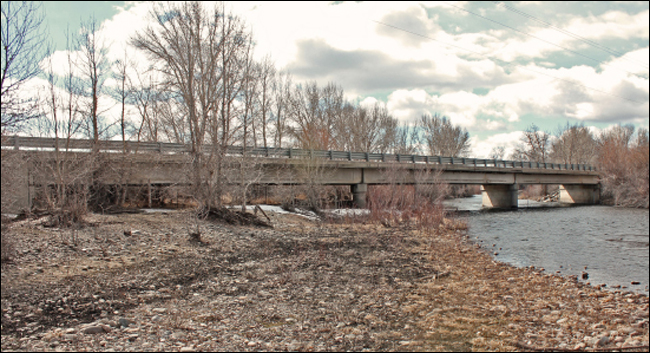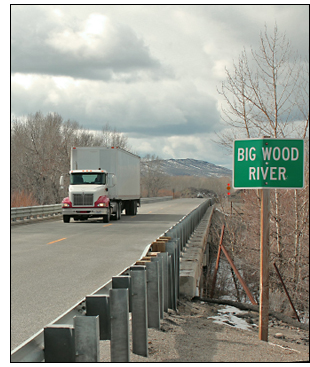

Stanton Crossing replacement in D4 is a safety improvement
![]()
Located about two miles west of the Idaho Highway 75 (Timmerman) junction, the $3.7 million Stanton Crossing project reconstructed and widened the 62-year-old bridge at milepost 176, reconstructed the adjacent roadway, and realigned and improved highway access for the local road and Stanton Crossing campground. Crews also realigned the private Idaho Department of Fish & Game (IDFG) roadway and campground loop.
The new bridge replaced the three-span structure built in 1956. The bridge is adjacent to the Stanton Crossing campground, managed by IDFG. The campground was originally known as Roadside Park, and was built by ITD when the highway running nearby was Idaho State Highway 68. When that highway was realigned and designated as US-20, Roadside Park remained viable until construction of the Timmerman Rest Area.
The Stanton Crossing site has a long history of recreational activities, such as camping and fishing. The project promises long-term improvements to the campground area.
The old bridge was aging and structurally deficient. The new one is 37 feet longer (274’ vs. 237’) and 11 feet wider (43’ vs. 32’) than the current bridge. It has wider shoulders and provides for additional river clearance and stabilization of the riverbank. It also was designed to meet the requirements of a meandering river while still protecting the bridge. 
Construction began in December 2016 and was completed in June 2018. It impacted drivers and bridge users in a number of ways:
Recreation
The area originally had two access points for the campground. During the design process, it was determined that one access point near the bridge posed safety issues for two main reasons:
- It was too close to the bridge and guardrail, which limited line of site safety when drivers exited the campground/entered the highway.
-
The highway was being used as a circulation loop for campers searching for parking spots, which impeded through traffic.
The decision was made to eliminate this problematic eastern access point to increase safety in the area. This required coordination between ITD and IDFG. ITD ultimately built a new roadway that allowed campers to circulate within the campground to look for parking rather than on the highway.
Environmental
ITD worked closely with IDFG to help facilitate wildlife migration in the new design to reduce potential vehicle/wildlife collisions. Outdated barriers were replaced with wildlife-friendly fencing.
This section of the river was prone to flooding, so the new bridge was designed to more efficiently allow the river to flow in its natural course. This was accomplished by reducing the bridge from three spans to two. The new bridge was also designed with only one pier, to allow water to flow through a main channel during low season and two channels during high season. The pier also was strategically aligned to run parallel with the river, thus reducing potential scouring/erosion on the new bridge and increasing the structure’s lifespan.
Extensive environmental work was done concerning the Yellow-billed cuckoo – an endangered species known to live near the Big Wood River. The project required the removal of trees at the construction site, so ITD planted replacement species to minimize this impact, and will continue to monitor the growth and progress over the next five years.
Published 04-12-19